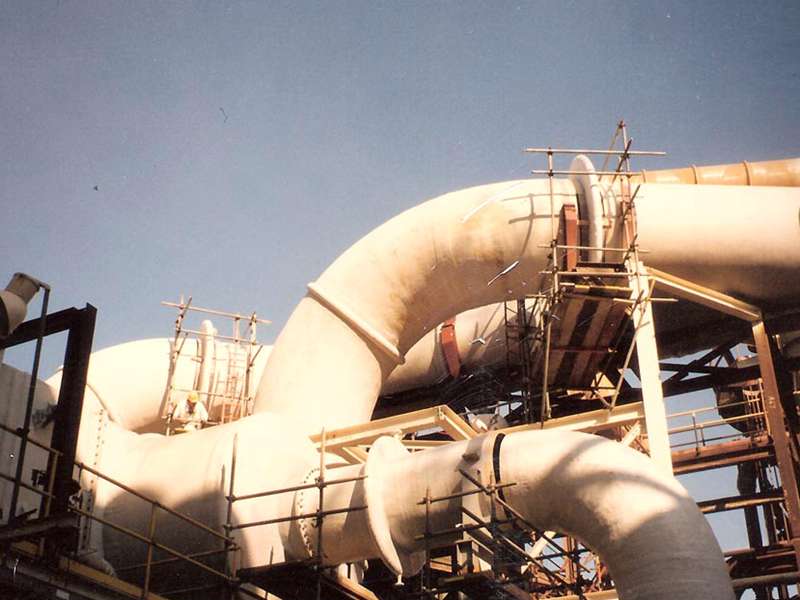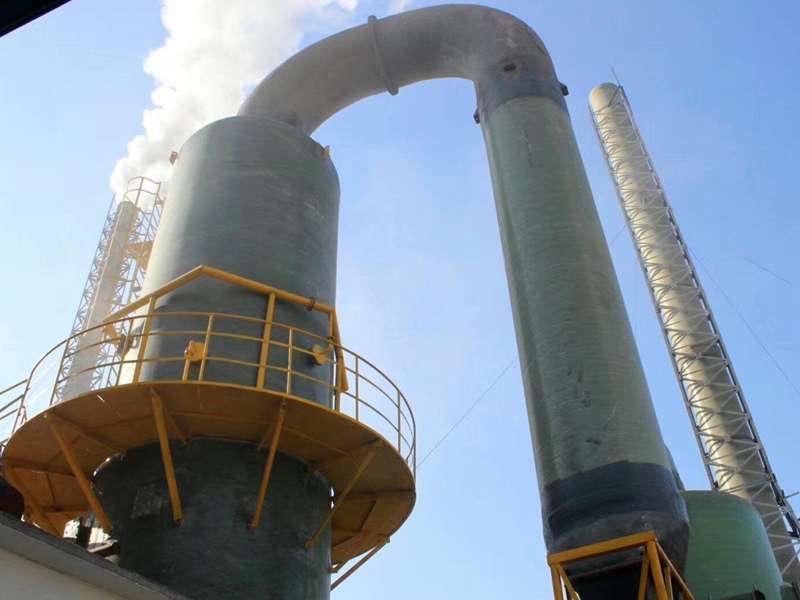Duct System for HVAC: Energy-Efficient, Custom, Leak-Tight
FRP Ducting for Corrosive Air: What Matters Now
If you manage fume control, scrubbers, or process exhaust, you’ve probably noticed the shift from metal to composites. The moment I stepped into a chlor-alkali plant last spring, the operator pointed at a run of fiberglass and said, “we stopped fighting rust.” That’s basically the pitch for the Duct System: corrosion-proof air conveyance with practical lifecycle economics.

What’s driving demand
Industrial ventilation is getting gnarlier—more chlorine, acid mists, and mixed flue gases; tighter IAQ rules; and, honestly, less tolerance for downtime. Composite ducting—specifically FRP with vinyl ester or epoxy-vinyl ester—has become the go-to in chemical plants, pickling lines, wastewater odor control, and data center scrubber skids. It’s lighter than steel, resists chlorine and SOx, and ships in big sections. Many customers say maintenance drops to inspections and gasket swaps. Seems simple, because it mostly is.
Quick spec snapshot
| Product | Duct System (FRP corrosion-resistant ducting) |
| Shapes | Round, rectangular, special/custom elbows & transitions |
| Sizes | Customized; typical Ø200–2400 mm; thickness per pressure class |
| Resin/Liner | Vinyl ester (corrosion grade); inner veil liner 2–5 mm; ASTM C581‑guided selection |
| Pressure / Temp | Up to ≈3–6 kPa positive; −2–−4 kPa negative; −20 to 110°C (real-world may vary) |
| Standards | ASTM D2996, C581; leakage per SMACNA class; optional ASTM E84 FR resin |
| Origin | No. 1289, Yingbin South Street, Jizhou District, Hengshui, Hebei, China |
How it’s made (short version)
- Materials: corrosion-grade vinyl ester resin, E‑glass, surface veil, fillers, FR additives (when specified).
- Methods: filament winding for round; contact molding/hand lay-up for rectangular and specials; bonded flanges.
- Testing: visual and thickness checks; spark test of liner; ring deflection; pressure/leakage to SMACNA; coupon immersion per ASTM C581; optional E84.
- Service life: commonly 15–25 years in scrubber exhaust; I’ve seen 30+ in mild acid duty with proper supports.
- Industries: chemicals, metals, pulp & paper, wastewater odor control, semiconductor wet benches, flue-gas treatment.

Why choose it
Advantages? Corrosion resistance to chlorine, HCl fumes, SOx; low weight (≈1/3 steel); fewer supports; fast install; decent thermal insulation; and it won’t pit like galvanized. There’s nuance—UV needs a topcoat, fire code may require FR formulation, and supports must prevent creep. But that’s solvable engineering.
Vendor comparison (real-world lens)
| Vendor/Material | Corrosion in Chlorine | Weight | Temp Range | Maintenance |
|---|---|---|---|---|
| Duct System (FRP) | Excellent with proper liner | Light | −20 to 110°C ≈ | Low; periodic inspections |
| Galvanized Steel | Poor without coatings | Heavy | −20 to 200°C ≈ | High; corrosion repairs |
| PVC/PP Duct | Good, but temp-limited | Very light | 0 to 60–80°C ≈ | Low; UV considerations |
Customization and options
You can spec round or rectangular, odd transitions, dampers, inspection ports, and flanged or bell‑and‑spigot joints. Liner chemistry is tuned to media—vinyl ester for chlorine or mixed acids; isophthalic for mild duty. Fire-retardant formulations and conductive veils (for static control) are available, to be honest, worth the upcharge in solvent‑laden exhaust.
Field notes and test data
- Wastewater odor control, 1,200 Pa negative pressure: leakage met SMACNA Class 3; operator reported “no measurable drop” at 12 months.
- Chlorine scrubber exhaust, 80°C: ASTM C581 coupon mass change
- Pickling line retrofit: install time cut ≈35% vs. coated steel due to lighter lifts and fewer anchors—installer feedback, not a lab number.

Certification context
Design and QA align with SMACNA leakage classes, ASHRAE ventilation guidance, and ASTM FRP protocols. When fire code applies, ask for an E84 report and check local adoption of NFPA 90A. For oil & gas or critical facilities, ISO 14692 methods for GRP design and testing are a useful benchmark.
References
- SMACNA HVAC Duct Construction Standards—Metal and Flexible, Leakage Classes.
- ASHRAE Standard 62.1: Ventilation for Acceptable Indoor Air Quality.
- ASTM C581, D2996, E84: Chemical Resistance, FRP Pipe, Surface Burning Characteristics.
- ISO 14692: Petroleum and natural gas industries—GRP piping.
- NFPA 90A: Standard for the Installation of Air-Conditioning and Ventilating Systems.
Latest news
-
Construction Work Using a Jackhammer for Heavy-Duty Tasks: Tools, Trends & Global ApplicationsNewsNov.19,2025
-
Durable Mining Equipment with Fiberglass Components | Sustainable & Lightweight SolutionsNewsNov.18,2025
-
Toothed Button Bit Explained: What Makes a Similar Title to Button Tooth Bit a Game-ChangerNewsNov.17,2025
-
Discover the Advantages of FRP Dual Layer Composite Products for Durable and Sustainable SolutionsNewsNov.17,2025
-
Exploring the Benefits of Top Hammer Drifter Rods for Enhanced Drilling EfficiencyNewsNov.15,2025
-
Effective Drilling Into Limestone Formations for Exploration & Sustainable Resource ManagementNewsNov.15,2025











